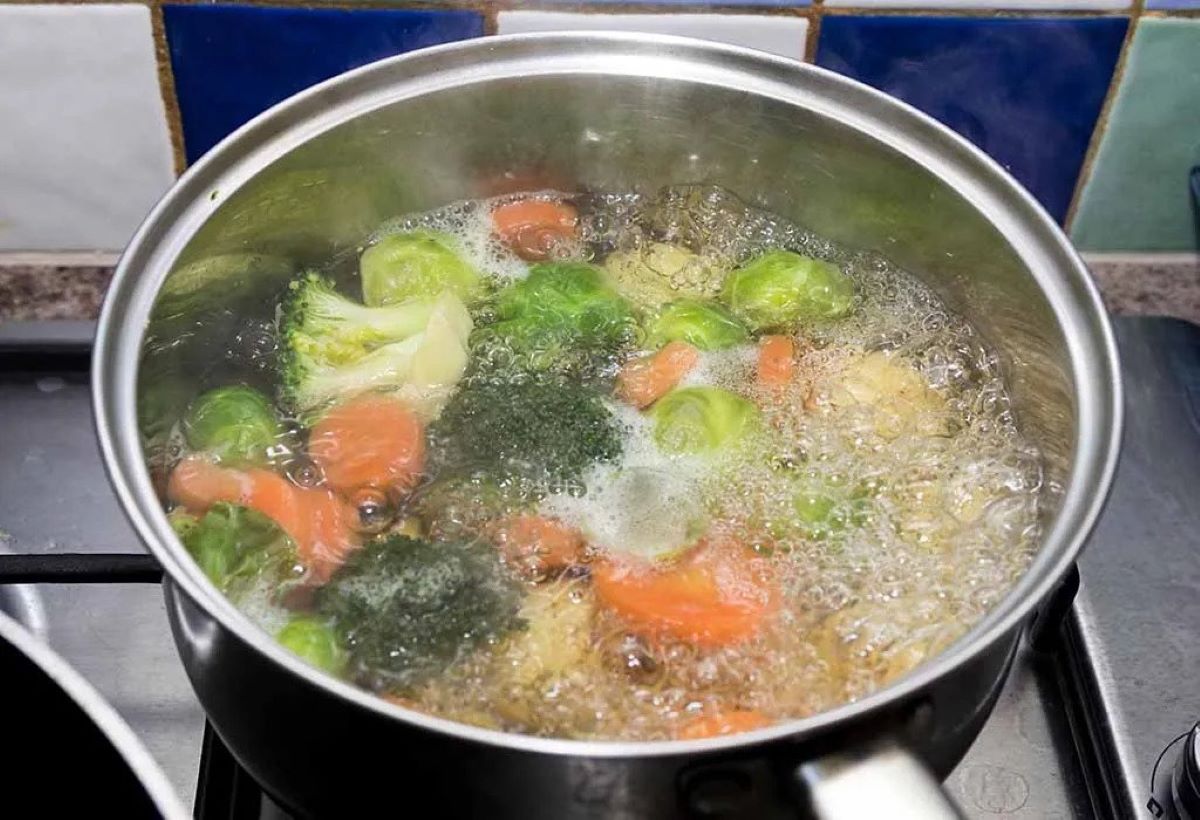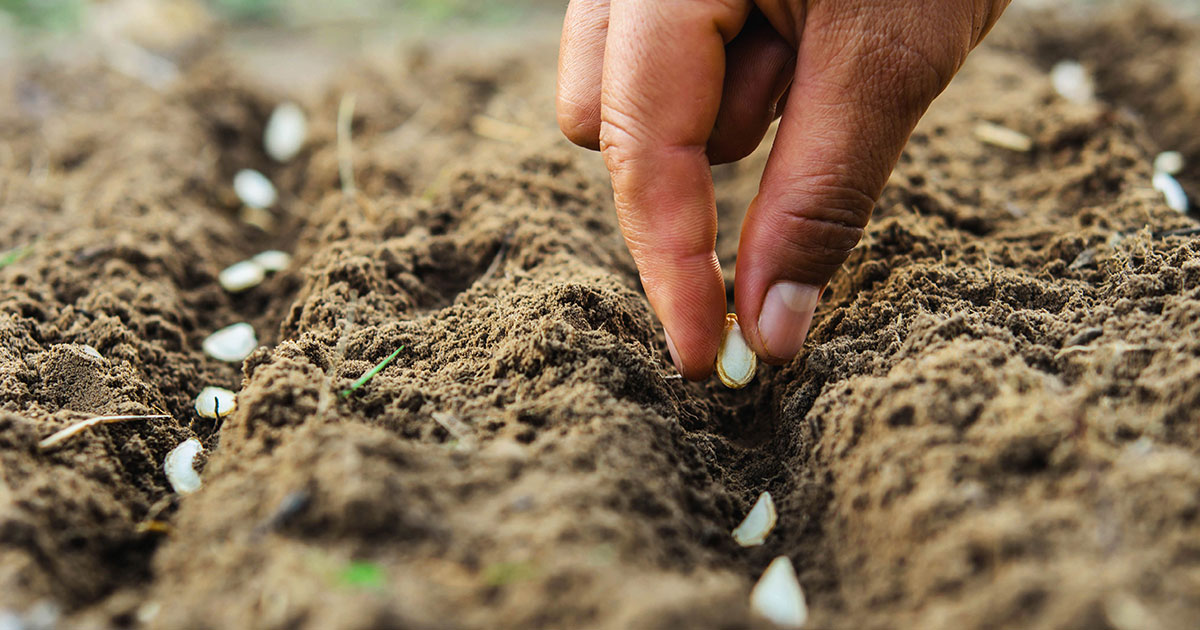Home>Gardening News and Trends>Latest News>How To Say Vegetables In Spanish


Latest News
How To Say Vegetables In Spanish
Modified: January 22, 2024
Looking for the Latest News on how to say vegetables in Spanish? Discover essential phrases and words for vegetables in this comprehensive guide.
(Many of the links in this article redirect to a specific reviewed product. Your purchase of these products through affiliate links helps to generate commission for Chicagolandgardening.com, at no extra cost. Learn more)
Table of Contents
Introduction
Learning a new language can be an exciting and rewarding experience. It opens up a world of opportunities, enabling us to communicate with people from different cultures and backgrounds. One essential aspect of language learning is expanding our vocabulary, and what better way to do that than by learning how to say vegetables in Spanish?
Whether you’re a vegetarian, a food enthusiast, or just keen on enhancing your language skills, knowing how to talk about vegetables in Spanish is a valuable asset. It allows you to navigate the local markets, order delicious vegetarian dishes in restaurants, and connect with native Spanish speakers on a deeper level.
In this article, we will explore common vegetables in Spanish and provide you with the essential vocabulary to confidently discuss vegetables in your conversations. We will cover a wide range of vegetables, from the familiar ones like carrots and tomatoes to the more exotic ones like artichokes and okra. So, let’s dive into the world of Spanish vocabulary and discover how to say vegetables in this beautiful and widely spoken language.
Learning the names of vegetables in Spanish not only expands your language skills but also deepens your understanding of Hispanic culture and culinary traditions. Spanish-speaking countries are known for their diverse cuisine, rich in vibrant flavors and healthy ingredients. By familiarizing yourself with the names of vegetables in Spanish, you can fully appreciate and immerse yourself in the gastronomic delights of these cultures.
Throughout this article, we will provide you with the Spanish translations for various vegetables, along with their pronunciations. We will also offer some additional vocabulary related to vegetables that will come in handy when discussing recipes or shopping for produce.
Ready to embark on this linguistic and culinary adventure? Let’s start by exploring some of the most common vegetables in Spanish!
Common Vegetables in Spanish
When it comes to discussing vegetables in Spanish, there are several common ones that you’re likely to encounter in everyday life. These vegetables are not only widely available but also form the basis of many traditional Spanish dishes. Let’s take a look at some of these commonly used vegetables:
- Zanahoria: Known as “carrot” in English, zanahoria is a versatile and nutritious vegetable. It is commonly used in soups, stews, salads, and as a side dish.
- Tomate: The Spanish word for “tomato” is tomate. Tomatoes are a staple ingredient in Mediterranean cuisine, and they can be used in a variety of dishes, such as salads, sauces, and salsas.
- Cebolla: Cebolla means “onion” in English. Onions are often used as a base for many Spanish dishes, providing flavor and depth to soups, stews, and sauces.
- Patata: Patata is the Spanish word for “potato.” Potatoes are incredibly versatile and can be boiled, roasted, mashed, or fried. They are a fundamental ingredient in popular Spanish dishes like tortilla española (Spanish omelette).
- Calabacín: Calabacín translates to “zucchini” in English. Zucchini is a popular summer squash that can be grilled, sautéed, or used in soups and pasta dishes.
- Espinaca: Espinaca means “spinach” in English. Spinach is a nutritious leafy green vegetable that can be enjoyed raw in salads or cooked in stir-fries, quiches, and soups.
- Pepino: Pepino is the Spanish word for “cucumber.” Cucumbers are refreshing and hydrating, often used in salads, sandwiches, and chilled soups.
- Pimiento: Pimiento is the Spanish word for “bell pepper.” Bell peppers come in various colors and are widely used in Spanish cuisine. They can be sautéed, stuffed, or roasted.
- Lechuga: Lechuga translates to “lettuce” in English. Lettuce is a common ingredient in salads and sandwiches, adding a crisp and refreshing element to dishes.
These are just a few examples of the common vegetables you’ll encounter in Spanish-speaking countries. Incorporating these vegetables into your vocabulary will allow you to navigate menus, talk to local vendors at markets, and truly immerse yourself in the culinary culture.
How to Say Specific Vegetables in Spanish
Now that we’ve covered some common vegetables in Spanish, let’s delve into the vocabulary for specific vegetables. Knowing how to say the names of specific vegetables will give you even more versatility when discussing recipes or dining out. Here are a few specific vegetables and their Spanish translations:
- Broccoli: In Spanish, broccoli is called “brócoli.”
- Cauliflower: The Spanish word for cauliflower is “coliflor.”
- Spinach: Spinach translates to “espinaca” in Spanish.
- Green Beans: In Spanish, green beans are known as “judías verdes.”
- Eggplant: Eggplant is referred to as “berenjena” in Spanish.
- Cabbage: The Spanish word for cabbage is “repollo.”
- Mushroom: Mushrooms are called “champiñones” in Spanish.
- Asparagus: Asparagus translates to “espárragos” in Spanish.
- Radish: The Spanish word for radish is “rábano.”
- Corn: In Spanish, corn is known as “maíz.”
Remember, when practicing these new vocabulary words, pay attention to the pronunciation. This will help you communicate effectively and be understood by native Spanish speakers.
In addition to the vegetables themselves, it’s also important to know some relevant verbs and phrases related to preparing or cooking vegetables. Here are a few key expressions:
- Cortar: This verb means “to cut.” Knowing this word will come in handy when following recipes that involve chopping vegetables.
- Hervir: “Hervir” means “to boil.” It is often used when cooking vegetables that require boiling, such as potatoes or carrots.
- Saltear: The word “saltear” translates to “to sauté.” Use this verb when preparing stir-fried vegetables.
- Receta vegetariana: This phrase means “vegetarian recipe.” It will be useful when searching for plant-based culinary inspiration.
By learning how to say specific vegetables in Spanish and familiarizing yourself with related cooking terms, you’ll enhance your ability to navigate recipe books, communicate with chefs, and fully appreciate the diverse world of Spanish cuisine.
Additional Vocabulary Related to Vegetables
Expanding your vocabulary beyond the names of specific vegetables allows you to have more comprehensive conversations about food and cooking. Here are some additional vocabulary words related to vegetables in Spanish:
- Frutas: This word translates to “fruits” in English. It’s important to note that in Spanish, fruits and vegetables are often categorized together as “frutas y verduras.”
- Hortalizas: The term “hortalizas” refers to “vegetables” in a more general sense.
- Plantas: This word translates to “plants” and can be used to refer to various types of vegetables.
- Orgánico: “Orgánico” means “organic,” which is becoming increasingly important to many people when it comes to choosing vegetables.
- Jugo de verduras: This phrase translates to “vegetable juice.” It’s useful to know when discussing healthy drink options.
- Ensalada: “Ensalada” means “salad” and refers to a dish that often includes a variety of vegetables.
- Sopa: In Spanish, “sopa” means “soup,” which can feature different vegetables as key ingredients.
- Repollo: “Repollo” means “cabbage,” specifically referring to the round-headed variety.
- Rábano: This word translates to “radish,” a small, peppery root vegetable.
- Raíz: “Raíz” means “root” and is used when talking about root vegetables like carrots, potatoes, and beets.
- Fibra: “Fibra” means “fiber” and is an important element found in many vegetables.
By familiarizing yourself with this additional vocabulary, you can expand your discussions and express your preferences when it comes to vegetables and their role in a healthy and balanced diet.
Now that you’ve learned how to say common and specific vegetables in Spanish, as well as some related vocabulary, you’re well-prepared to explore and engage in conversations about vegetables in the Spanish-speaking world. So go ahead, savor the flavors, and immerse yourself in the vibrant culinary culture that awaits!
Conclusion
Learning how to say vegetables in Spanish is a wonderful way to expand your language skills and deepen your understanding of Hispanic culture. By familiarizing yourself with the names of common and specific vegetables, you can confidently navigate local markets, order vegetarian dishes in restaurants, and engage in conversations about food and cooking.
We explored a variety of common vegetables in Spanish, such as zanahoria (carrot), tomate (tomato), and cebolla (onion), which form the foundation of many traditional Spanish dishes. We also delved into the vocabulary for specific vegetables, allowing you to expand your repertoire and discuss recipes or dining experiences with precision.
Additionally, we introduced you to some extra vocabulary related to vegetables, including fruits, organic options, cooking methods, and dishes like ensalada (salad) and sopa (soup). This knowledge will enable you to have more in-depth conversations about food and make informed choices when shopping for produce.
By understanding how to say vegetables in Spanish, you not only enhance your language skills but also gain a deeper appreciation for the rich culinary traditions and diverse gastronomy found in Spanish-speaking countries.
So whether you’re a vegetarian, a food enthusiast, or simply want to broaden your language proficiency, make sure to incorporate these vegetable names and related vocabulary into your language learning journey. Explore the vibrant world of Spanish cuisine, delight in new flavors, and engage in meaningful conversations about food and culture.
Buen provecho! (Enjoy your meal!)









